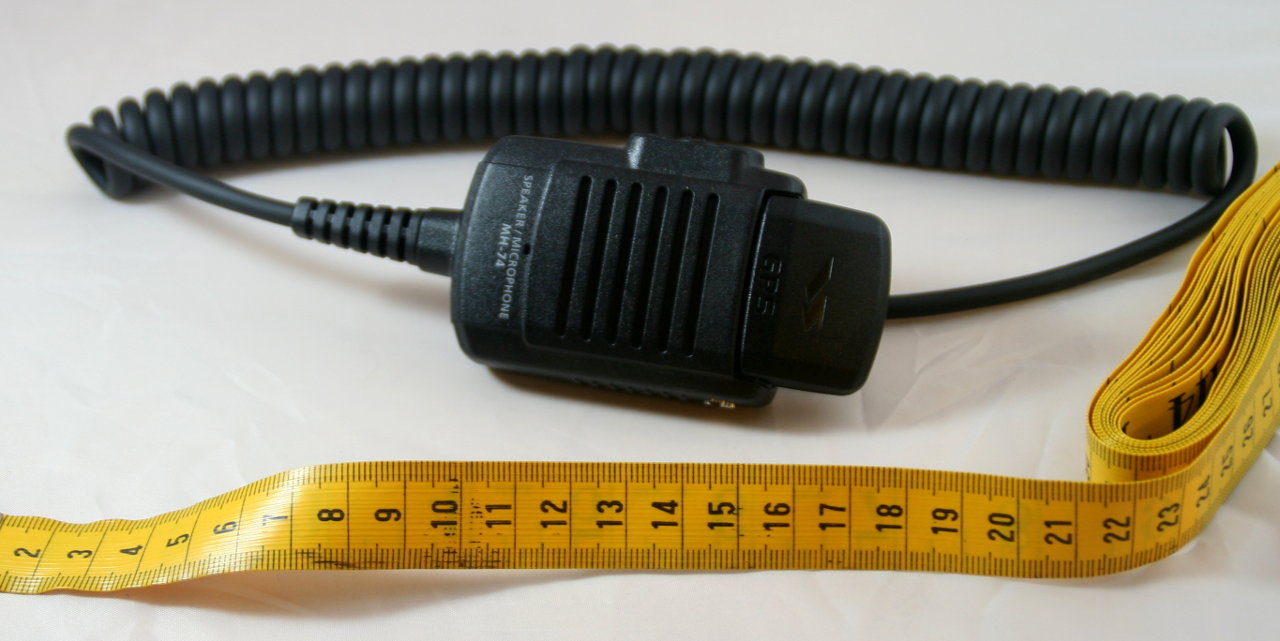My radio has its first accessories: a speaker/mic (MH-74A7A) and the GPS module.
The first thing that struck me about both the speaker/mic and the GPS unit was how small they were. Quite a bit smaller than what I expected from a hand mic (something big and chunky). The MH-74A7A is the size of my palm and at first seems like it would be too small to hold or use comfortably. Turns out to be not so bad though, and the lighter weight (compared to holding the radio) will probably mean less fatigue when playing radio. I think the cord weighs more than the microphone itself. There’s a single PTT button on the side and that’s it, so using it is pretty simple.
Sound quality is pretty much the same as what I get out of the radio speaker, although perhaps not quite as loud. No complaints there. The nice thing is that I can clip it closer to my ear for easier listening, rather than walking around holding a radio up to my head. Stick the radio in the side pouch of my backpack, clip the speaker/mic to the shoulder strap and i can walk around listening to the weather radio or for any radio activity. Much easier than walking around holding the radio up to my ear or in front of me.
The GPS module is even smaller than the speaker/mic (about half the size) and plugs right into the top of the speaker/mic and secured by a screw. So far it seems to work pretty well and gives the radio GPS capabilities and makes the radio’s APRS feature useful. It’s small and light enough that it doesn’t make the speaker/mic top-heavy when it’s attached and secured into place.
Overall, the combination is nicer and much easier to use than I expected it would be at first glance. Used it a few times now to play radio and so far the most awkward part is getting tangled up in the cable. I think I’m going to enjoy using the speaker/mic with my radio.
